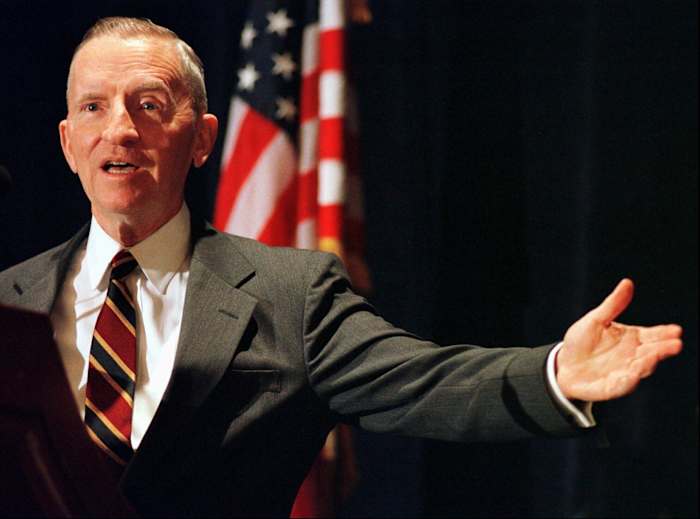Elon Musk’s Political Ambitions: The Birth of the America Party
Elon Musk’s recent announcement about forming a new political party, the America Party, places him alongside a historical lineage of influential figures attempting to disrupt the entrenched two-party system that has characterized U.S. politics since its inception. From the early 19th century with the Anti-Masonic Party to more contemporary efforts like the No Labels initiative, the landscape of American politics has been peppered with various third parties, some fleeting and others leaving lasting impacts.
The Two-Party Dominance and Its Evolution
Since the Civil War, the Republican and Democratic parties have firmly held the reins of political power. Yet, they have undergone numerous transformations, often motivated by the emergence of third parties that threatened their voter bases. History teaches us that while these major parties have occasionally absorbed third-party influences, many have managed to establish themselves, even without achieving the heights of the White House or majorities in Congress.
Musk’s choice of name for his proposed party may seem vague compared to the colorful identifiers of historic movements like the Know-Nothing Party or the Bull Moose Party. Yet, it suggests a focus on uniting diverse voices under a single umbrella, posing an intriguing challenge to the conventional political paradigms.
Musk’s Strategic Focus
Elon Musk’s ambitions with the America Party seem to revolve around specific electoral targets, possibly choosing a few House and Senate races to influence rather than aiming for sweeping national success. In a recent post on X, he outlined a strategy of concentrating efforts on “2 or 3 Senate seats and 8 to 10 House districts.” Given the current razor-thin margins in Congress, even a handful of strategically placed victories could allow the America Party to assert considerable influence over contentious legislation. Musk’s vision appears to be one of serving the “true will of the people,” rather than seeking to dominate the legislative landscape outright.
A Walk Through Political History
The Anti-Masonic Party
Emerging in 1828, the Anti-Masonic Party was the first formal third party in U.S. history. Catalyzed by public anxiety over the Freemasons and the disappearance of former Mason William Morgan, the party tapped into widespread distrust of elite groups. They pioneered essential democratic practices like the presidential nomination convention and formal party platforms. Although it peaked with 25 House seats and secured electoral votes in 1832, the Anti-Masonic Party eventually faded into the Whig Party, highlighting the potential for third parties to influence larger political currents.
The Free Soil Party
Formed in the wake of the Mexican-American War, the Free Soil Party attracted anti-slavery factions from both major parties and campaigned vigorously for “free soil, free speech, free labor, and free men.” Their primary aim was to prevent the expansion of slavery into new territories. Despite winning only a limited number of seats and no electoral votes for their presidential nominee, they helped shape discourse around the moral and economic dimensions of slavery, laying important groundwork for the future Republican Party.
The Know-Nothings
Arising from a nativist movement, the Know-Nothing Party gained traction in the 1850s, largely advocating for anti-immigration and anti-Catholic policies. Their secretive nature led to the nickname “Know-Nothings,” as members often claimed ignorance about the party’s existence when questioned. While their electoral success was limited, their platform revealed a significant public appetite for addressing concerns over immigration and national identity.
The Populist Movement
The late 19th century brought about the People’s Party, or the Populists, in response to agricultural distress. Advocating for reforms like the nationalization of railroads and a graduated income tax, they captured the political zeitgeist of their time. Their alignment with the Democratic Party in the 1896 election showcased their influence on major party platforms that would follow, particularly during the progressive era.
The Progressive Party (Bull Moose Party)
In 1912, former President Teddy Roosevelt launched the Bull Moose Party in a bid to regain the presidency after losing the Republican nomination. He garnered the most electoral votes ever for a third-party candidate, fundamentally altering the political spectrum by splitting the Republican vote. The Bull Moose Party’s progressive platform championed reforms like women’s suffrage, labor rights, and anti-monopoly laws, many of which later became staples of both major parties.
Dixiecrats and the Reform Party
In 1948, Southern Democrats disillusioned with civil rights legislation formed the Dixiecrats, or the States’ Rights Democratic Party, highlighting the deep divisions within the Democratic Party concerning race relations. Their brief yet impactful presence showcased the shifting political alliances in the South, a trend later tapped into by Republican strategies.
The Reform Party, spearheaded by billionaire Ross Perot in the 1990s, centered on fiscal conservatism and brought national attention to issues like the federal deficit. Perot’s campaigns illustrated how a well-funded third-party candidate could disrupt the electoral balance significantly, warranting attention to fiscal responsibility among the major parties.
Implications of Musk’s Aspirations
Elon Musk’s entry into the political sphere with the America Party raises several questions about the feasibility of third-party movements in today’s political climate. Successful third parties have historically acted as catalysts for societal change, influencing major party policies even without securing high offices themselves. Musk’s focus on targeted races might mimic this historical trajectory, challenging the assumption that only two parties dominate American political discourse.
As the America Party begins to take form, it too will need to navigate the complexities of public perception, electoral mechanics, and the perennial American tension between idealism and pragmatism. Whether Musk’s vision will thrive in a landscape defined by the powerful gravitational pull of the Democratic and Republican parties remains uncertain, but it undoubtedly promises to enrich the ongoing dialogue about America’s political future.


